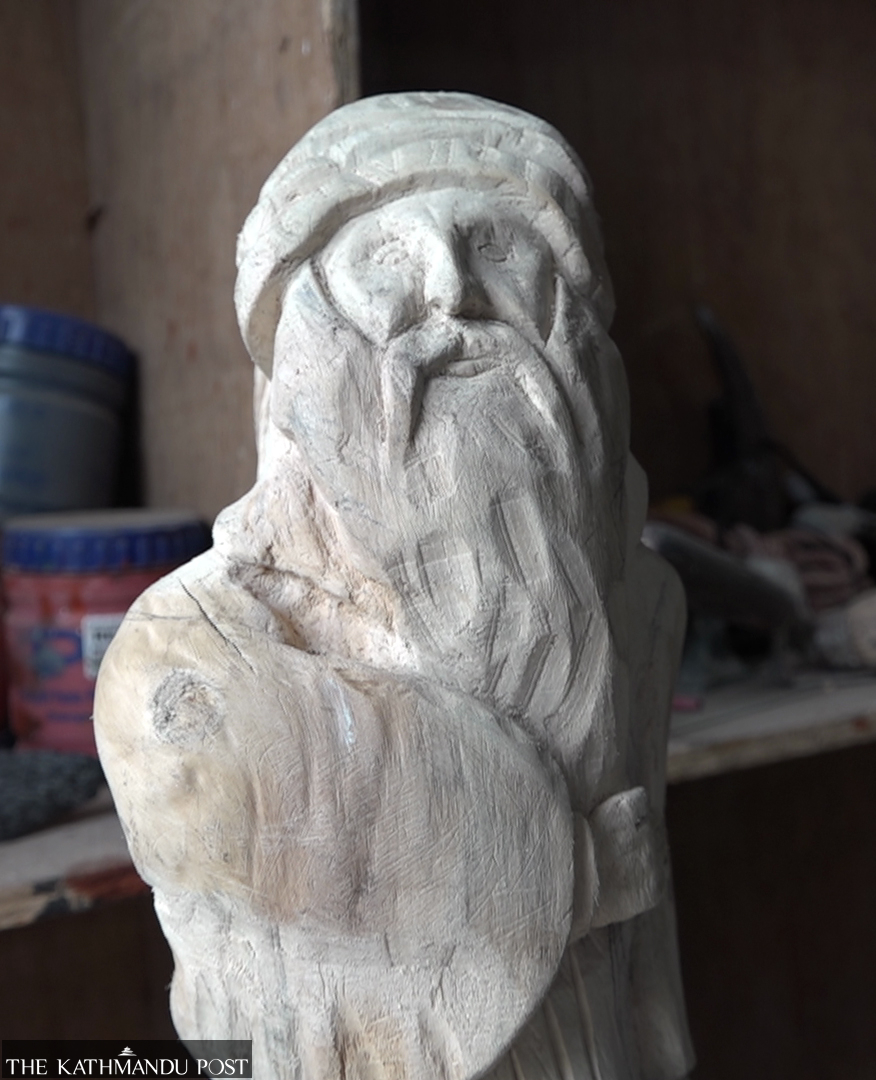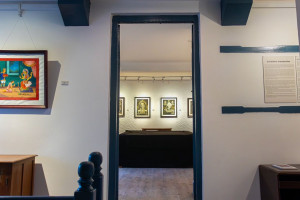Arts
This Dolakha artist works magic on tree roots
Sujan Khadka picks up abandoned roots from trees and carves them into absurdly shaped sculptures.
Kedar Shiwakoti
One might be taken aback when they reach 37-year-old Sujan Khadka’s home in Bhimeshwar municipality in Dolakha. His front yard is filled with giant dry tree roots. No, nothing sketchy is going on. In fact, Khadka collects them to give them a new life—mostly as wooden sculptures.
Khadka has always loved the absurd. He is known in the village as a man of satire, often drawing satirical and silly drawings. His interest in root carving—not wood carving—started during lockdown when there simply was nothing to do at home. So he brought roots from trees felled for development projects or those rotting away and started sculpting and painting them.
According to him, trees have always been valuable. But somehow, the roots, which are responsible for keeping the trees alive, are neglected. When a tree dies or is cut down, its roots are often left behind, as people don’t really know what to do with them.

However, for Khadka, roots, and their eccentric shapes, are of utmost interest. More than forty roots have been given the touch of creativity in his gallery. “There are fewer root carvers and more wood carvers,” he says.
The roots usually make for an abstract sculpture, mainly because they are already bound by their shapes. But that hasn’t stopped Khadka from experimenting.
For him to start a piece, first, he has to carefully observe the root’s shape—from the angles and length of the branches. After that, he decides what stories he wishes to tell with the roots, which can range from a placid face of the Buddha to a symbolic representation of the woes women face in society.
“To carve on one root with my hands takes from a week to one month.” But simply carving it isn’t enough. He also adds colours to it and finalises the piece with a glaze. To give colours and shape to a root is very toilsome, he states.

The process of carving on roots is different from wood carving. “The natural shape of the root drives the narrative,” he says. From sculptures of animals to metaphorical representations of societal issues, Khadka has carved them all.
Recently, he has begun the work of creating a giant collection of tree roots. He shares that creating such a ‘forest’ has been a dream of his. “The installation will show the importance of roots in nature,” he says.
These root carvings haven’t been commercially taken to the market yet. “I don’t even know how to price them,” he says. But that hasn’t stopped him because Khadka is fueled by the passion to create something truly unique.




 9.12°C Kathmandu
9.12°C Kathmandu

%20(1).jpg&w=200&height=120)









